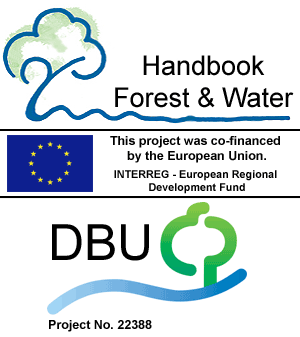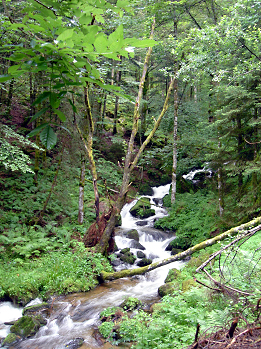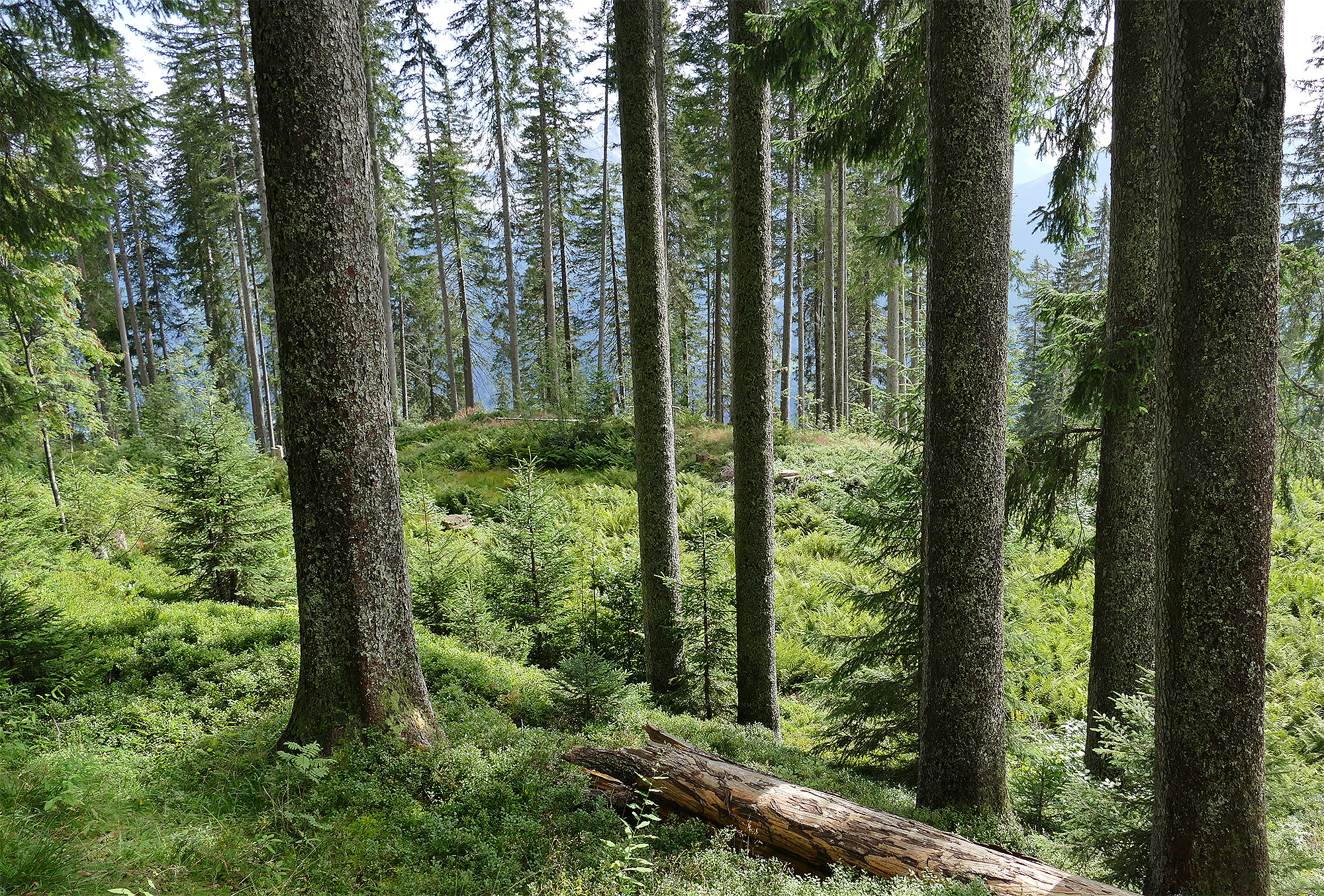
Stream accompanying forests in Central Europe are naturally dominated by deciduous trees. In montane areas silver fir is present in these forests too. Since the rise of spruce’s reputation as a fast-growing tree species in the middle of the 19th century, it has been planted on many unsuitable sites, even in ground- and surface water influenced riparian margins. On these sites they pose a special operational risk due to their labile growth. From an ecological perspective spruce affects the ecosystem through coniferous litter deposition into streams and shadowing out of light demanding riparian vegetation. Furthermore their lateral root system, which has little effect on soil stabilisation, leads to a discharge of fine materials and sediments. Only in the higher reaches of low mountain ranges (above 1100 m) are spruce-swamp-forests naturally found in continuous wet and percolated sites.
In other reaches of low mountain ranges such spruce dominated stands are destined to be transformed into semi-natural forests according to the semi-natural silviculture directive (MLR, Richtlinie landesweiter Waldentwicklungstypen, 2014). Without knowing the natural forest communities of small streams however, it’s not possible to develop site specific semi-natural stands.
Forest communities of small streams
This article compares some of the most important forest communities of small streams in low mountain ranges. The communities will be separated according to their water balance and flood frequency requirements. Riparian forestss are occasionally to frequently flooded. Wet forests are characterised by surface water and more or less moving groundwater. Ravine forests can be included too, if they accompany streams in air- and soil-moist valleys (mainly V-shaped valleys). Further distinguishing factors are altitude, local climatic conditions, type, period and duration of high and low water flows and their velocity.
Willows play a secondary role in the environment along forested streams in low mountain ranges. This is due to, among others, a heavy shadowing effect through semi-natural stocking which leaves no space for light demanding pioneer species and the difficulty of colonising steep V-shaped valleys or at least only a few dry shallow parts during summer.
1. Riparians (Profiles of the forest communities, PDF-file)

Fig. 1: Sycamore Maple -Ash-Ravine Forest. (Foto R. Ostermann).
Forests in stream and river meadows, characterised by episodic to frequent, temporally varying floods, in parts even streams on sites depending on groundwater fluctuation
1.1 Stitchwort-Black Alder-Forest
1.2 Black Alder-Ash-Forest
1.3 Riparian-Grey Alder-Forest
2. Swamp and Wet Forests (Profiles of the forest communities, PDF-file)
Forests with different base-rich soils with temporary or permanent high ground- or leakage water, no surface flooding, occasionally flooded through ground water
2.1 Black-Alder-Ash-Swamp Forest (syn.: Bird Cherry-Alder-Ash-Forest)
2.2 Spruce-Swamp Forest
3. Ravine and Talus Forests (Profiles of the forest communities, PDF-file)
Broad leaved tree rich forests on steep slopes, in ravines and on stony slopes, to a large extent on consolidated sites.
3.1 Sycamore-Ash-Ravine Forest
Literature
- Riecken U., Ries U., Symank A. (1994): Rote Liste der Biotoptypen der Bundesrepublik Deutschland. Schriftenreihe für Landschaftspflege und Naturschutz 41: 184 S. Bonn, Bad Godesberg. Oberdorfer E. (1992): Süddeutsche Pflanzengesellschaften. Teil IV: Wälder und Gebüsche. 2. Auflage. Jena. Textband 282 S., Tabellenband 580 S. Reidl K., Suck R., Bushart M., Herter W., Koltzenburg M., Michiels H.-G. & Wolf Th., (2007): Potenzielle Natürliche Vegetation von Baden-Württemberg mit Karte im Maßstab 1: 200.000. In: Landesanstalt für Umwelt und Messungen Baden-Württemberg (LUBW).
